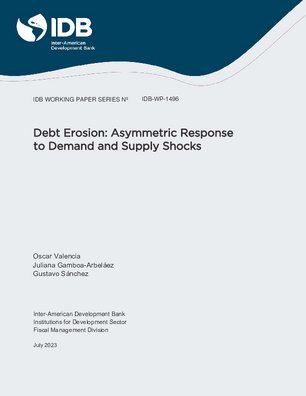Debt Erosion: Asymmetric Response to Demand and Supply Shocks
Date
Jul 2023
This paper explores the effect of inflation supply and demand shocks on government debt. It identifies the shocks using a sign-restricted Structural Vector Autoregression (SVAR) model with quarterly data. Estimations of dynamic panel regressions and local projections suggest that supply shocks lead to persistent increases in government debt, while demand shocks result in long-lasting declines. Furthermore, high debt levels increase economic vulnerability, amplifying the impacts of both supply and demand shocks by more than three times. Specifically, supply shocks increase debt through higher borrowing costs and more prolonged depreciation, whereas demand shocks erode debt through persistent reductions in primary balance, driven by increased revenues.




